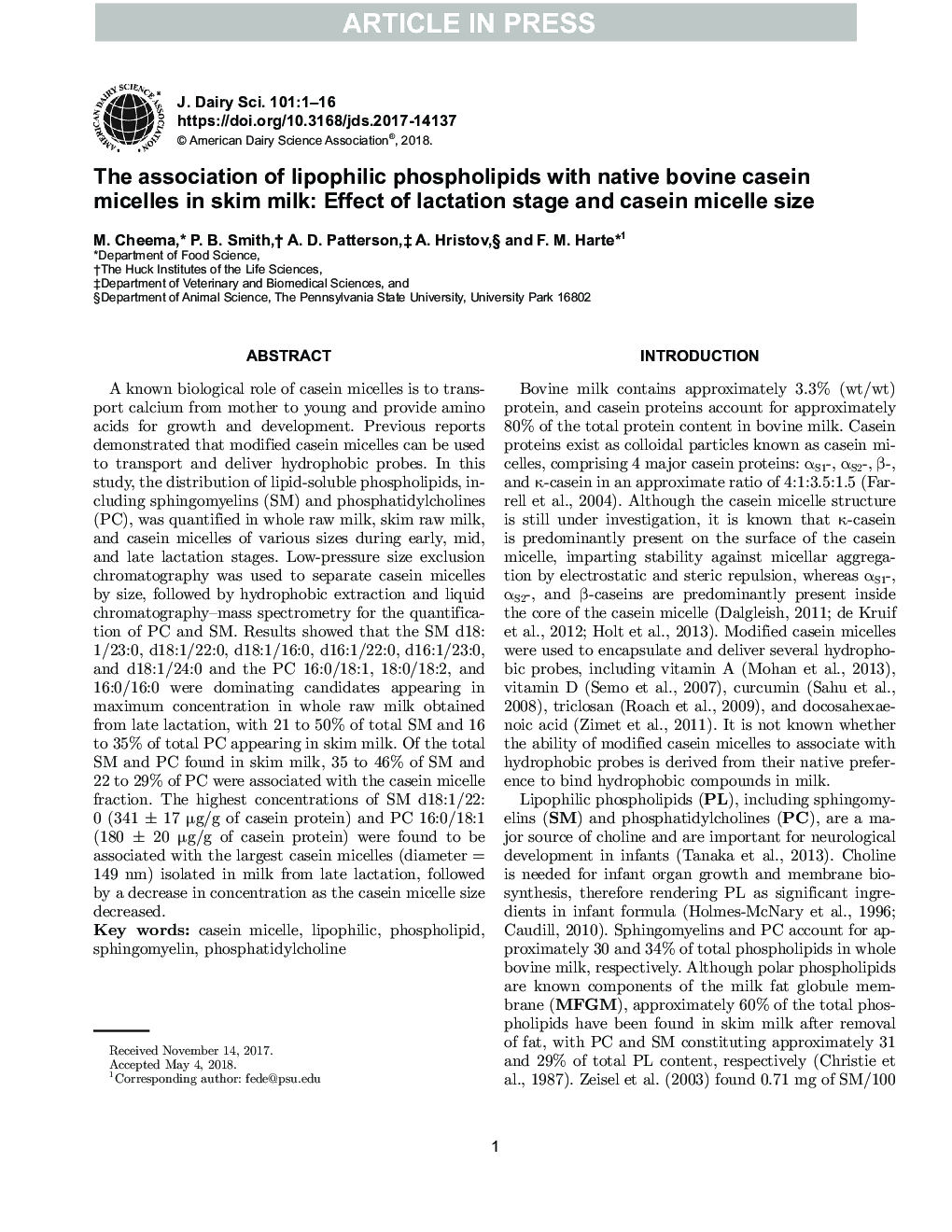| Article ID | Journal | Published Year | Pages | File Type |
|---|---|---|---|---|
| 10158040 | Journal of Dairy Science | 2018 | 16 Pages |
Abstract
A known biological role of casein micelles is to transport calcium from mother to young and provide amino acids for growth and development. Previous reports demonstrated that modified casein micelles can be used to transport and deliver hydrophobic probes. In this study, the distribution of lipid-soluble phospholipids, including sphingomyelins (SM) and phosphatidylcholines (PC), was quantified in whole raw milk, skim raw milk, and casein micelles of various sizes during early, mid, and late lactation stages. Low-pressure size exclusion chromatography was used to separate casein micelles by size, followed by hydrophobic extraction and liquid chromatography-mass spectrometry for the quantification of PC and SM. Results showed that the SM d18:1/23:0, d18:1/22:0, d18:1/16:0, d16:1/22:0, d16:1/23:0, and d18:1/24:0 and the PC 16:0/18:1, 18:0/18:2, and 16:0/16:0 were dominating candidates appearing in maximum concentration in whole raw milk obtained from late lactation, with 21 to 50% of total SM and 16 to 35% of total PC appearing in skim milk. Of the total SM and PC found in skim milk, 35 to 46% of SM and 22 to 29% of PC were associated with the casein micelle fraction. The highest concentrations of SM d18:1/22:0 (341 ± 17 µg/g of casein protein) and PC 16:0/18:1 (180 ± 20 µg/g of casein protein) were found to be associated with the largest casein micelles (diameter = 149 nm) isolated in milk from late lactation, followed by a decrease in concentration as the casein micelle size decreased.
Related Topics
Life Sciences
Agricultural and Biological Sciences
Animal Science and Zoology
Authors
M. Cheema, P.B. Smith, A.D. Patterson, A. Hristov, F.M. Harte,
